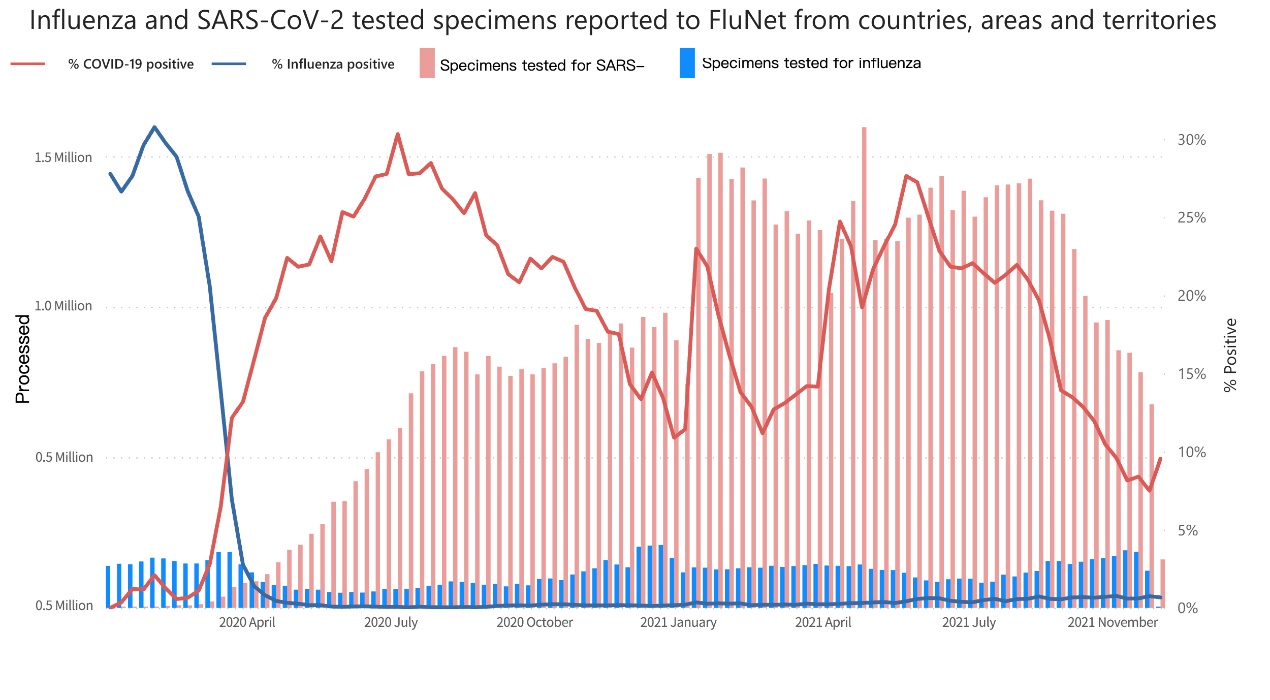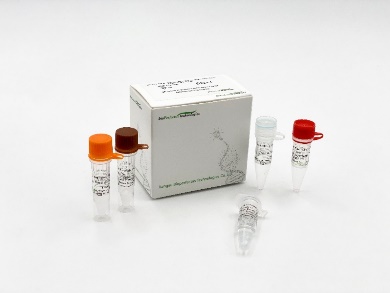
Seasonal influenza epidemics occur mainly during winter, from October to March in the northern hemisphere and April to September in the southern hemisphere. In tropical and subtropical countries, seasonal influenza can happen all year round.
According to the report from WHO, despite continued testing for influenza in some countries, influenza activity remained at lower levels than expected for this time of the year globally. The mask wearing, physical distancing, enhanced hygiene measures and reduced travel to reduce SARS-CoV-2 virus transmission have likely played an important role in reducing influenza virus transmission. On the other hand, fewer patients came to clinics for the influenza testing due to the pandemic might also contribute to the decreased infection situation.

Although the low positive rate is encouraging, we should never lower our guard for influenza at any time. The influenza virus is constantly mutating, “But we do not know when it will happen, what virus strain it will be and how severe the disease will be,” said Dr Wenqing Zhang, the manager of WHO’s Global Influenza Programme. “This uncertainty makes influenza very different to many other pathogens,” she said. For now, scientists are still speculating on the potential impact of this reduced influenza transmission phenomenon. “I am sure that flu will come back with a vengeance at some stage in the future,” says Robert Ware, a clinical epidemiologist at Griffith University in Queensland, Australia,“but it might take a few years.” Anyhow, continuous surveillance is still one the best ways to prevent the outbreak.
Like all the respiratory infectious diseases, Influenza can spread quickly between people when an infected person coughs or sneezes, dispersing droplets of the virus into the air. It can be also spread by hands contaminated by the virus.
People most at risk for severe seasonal influenza are:
- Pregnant women at any stage of pregnancy
- Children younger than 5 years
- People older than 65 years
- People with chronic medical conditions and weak immune system such as HIV/AIDS, asthma, heart and lung diseases and diabetes
- People with increased risk of exposure to influenza, which includes health care workers.
Due to some symptoms of flu, COVID-19, and other respiratory illnesses are similar, the difference between them cannot be made based on symptoms alone. Laboratory testing is needed to help to confirm the diagnosis. People can be infected with both flu and the virus that causes COVID-19 at the same time and have symptoms of both influenza and COVID-19.
Detection of the three virus by one kit
Bioperfectus provides a real-time PCR kit to diagnose influenza A, B and SARS-CoV-2 infection in a single test, rather than having to run separate SARS-CoV-2 tests and influenza tests. This combo kit allows laboratories to save time and labor and process up to three times as many tests as they can with separate SARS-CoV-2 kit and influenza kits. Therefore, public health laboratories could continue the influenza surveillance while they are also testing for SARS-CoV-2 by using this kit. It will greatly help to alleviate the burden of laboratories with limited resources in this pandemic.
(Influenza A and B Viruses Antigen Rapid Test Kit and Influenza A and B Viruses Real Time PCR Kit are also available for rapid screening and confirmation if the separated flu detection is needed.)

COVID-19 Coronavirus and Influenza A/B Virus Real Time PCR Kit
- Detect ORF1a/b and N gene, for SARS-CoV-2, M gene for influenza A virus, NS gene for influenza B virus and endogenous internal control in one tube.
- Very easy Master Mix setup procedure with high sensitivity and specificity
The history of humanity is also a history of fighting pathogens. From Flu, HIV, tuberculosis, severe acute respiratory syndrome (SARS), Ebola…to Covid-19, most of the pathogens are not being eliminated and we will coexist with them for a long time. Human activity, however, is making infectious pathogens transmission increasingly easy by creating multiple pathways. Bioperfectus has been working closely with Chinses CDC for years and contributing to develop more than 400 pathogen detection products. Those kits have been utilized and contributed to diagnostics, surveillance, and research to prevent infectious diseases transmission.
Contact with us for the full list of RUO products.
References

